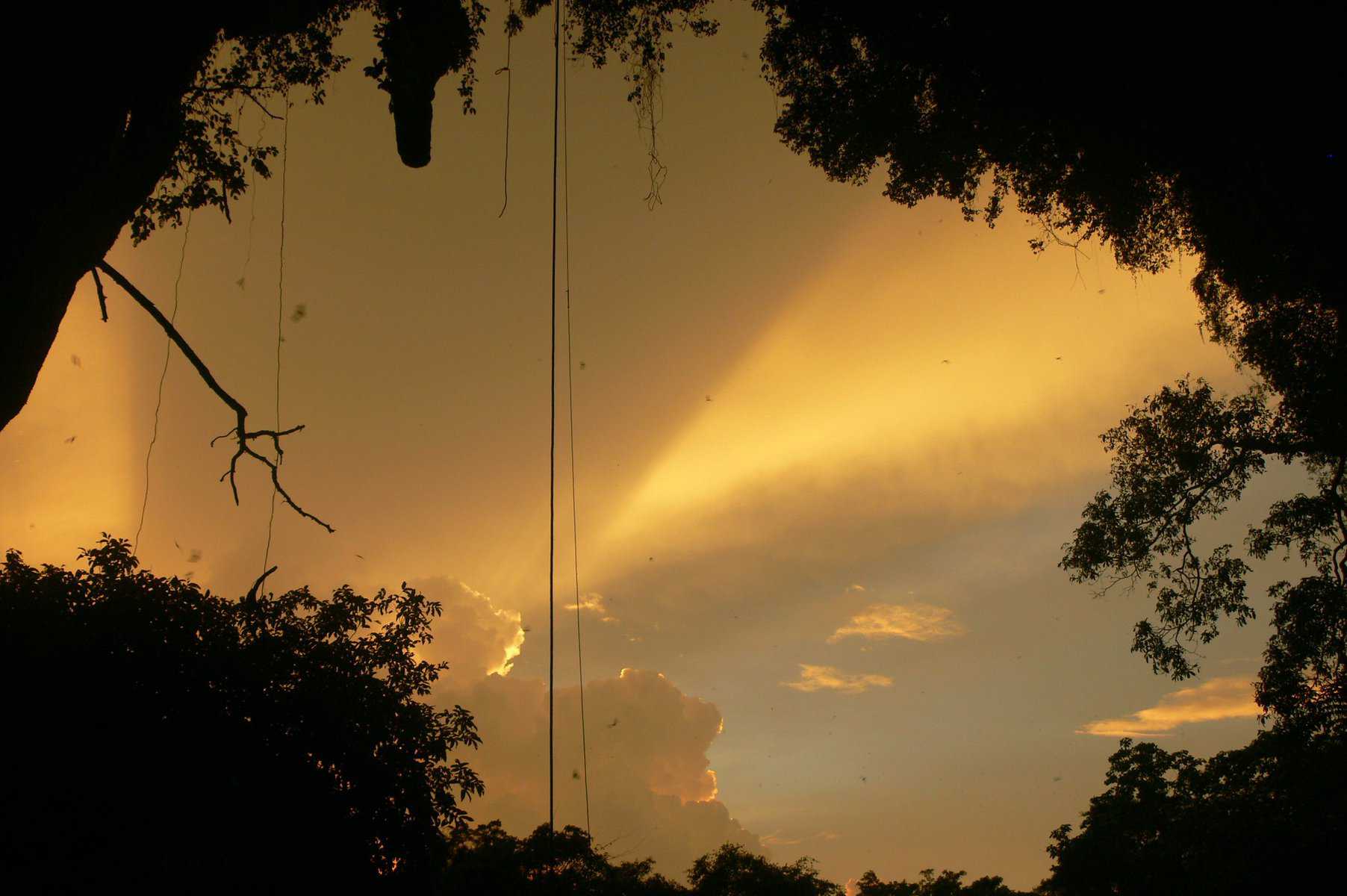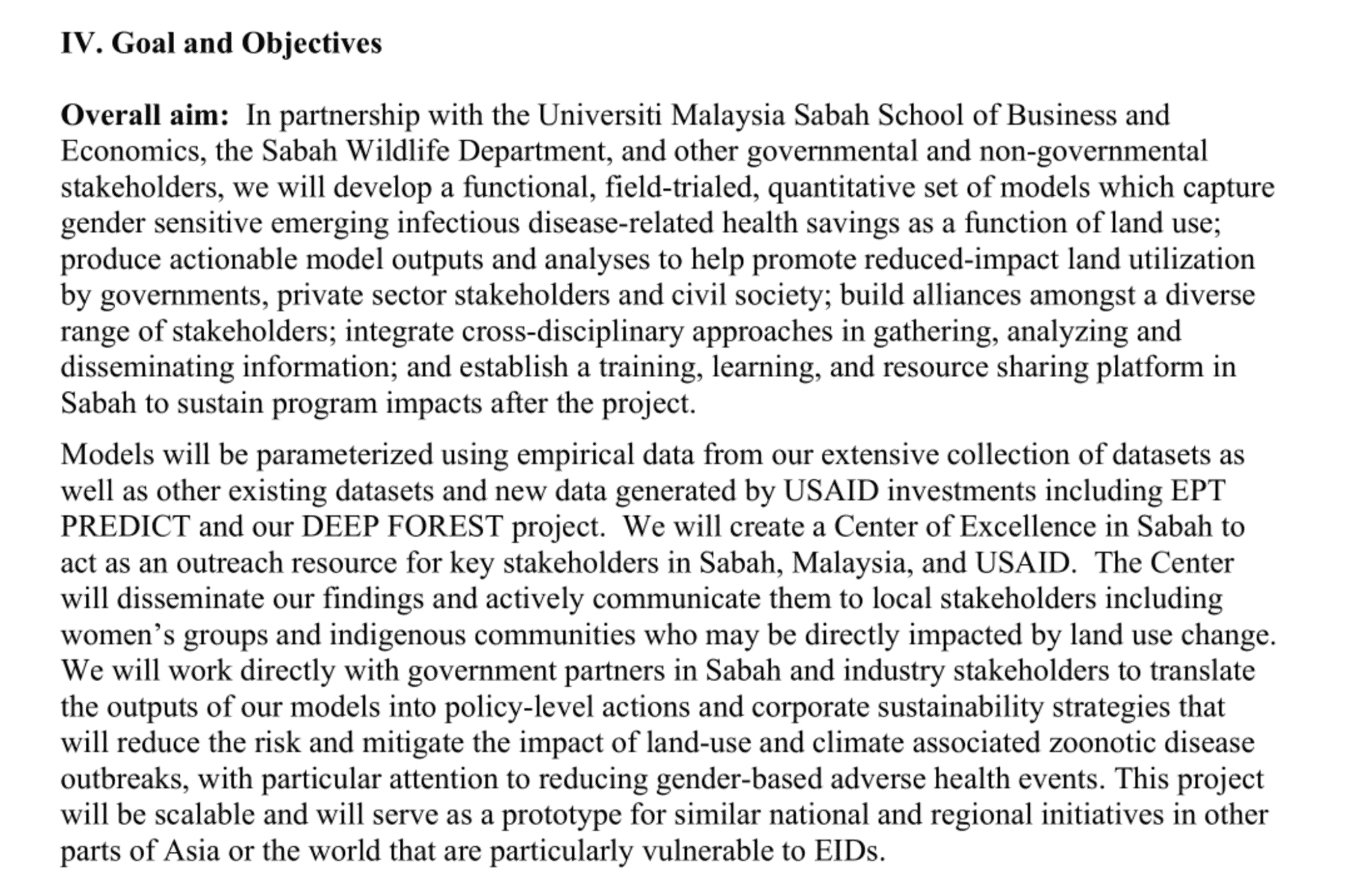
EcoHealth Alliance conducted field research for years in Southeast Asia, a region central to the origin of COVID-19, but some of the data appears to have been withdrawn from public view.
EcoHealth Alliance, an American scientific organization that receives funds from several federal agencies, has come under scrutiny for its controversial work hunting for novel viruses in collaboration with the Wuhan Institute of Virology, a lab at the pandemic’s epicenter.
One of the group’s projects in Malaysia, Thailand and Indonesia — the Infectious Disease Emergence and Economics of Altered Landscapes Project or “IDEEAL” — culminated in a disease modeling app that no longer appears on the EcoHealth Alliance website.
A final report summarizing the project in 2019 describes the app as functional, but it appears that the link that once housed the project ’s app is now broken, and the organization’s website instead links to a page that states it is “under construction.”
“The app’s domain is currently under construction,” said Majelia Ampadu, communications director for EcoHealth Alliance.
Requests for more details were not answered.
Another website describing the IDEEAL project – the url of which was discovered through grant reports obtained through Freedom of Information Act requests – was taken down in the summer or fall of 2021, according to the WayBack Machine.
IDEEAL worked on minimizing human diseases associated with deforestation, not virus hunting, and focused on malaria, not coronaviruses. But IDEEAL also worked closely with another USAID-funded project that searched for novel viruses called PREDICT, including sharing staff.
IDEEAL’s app may have pulled data from EcoHealth’s work hunting for viruses in wildlife with PREDICT, the grant reports show.
“Models will be parameterized using empirical data from our extensive collection of datasets as well as existing datasets and new data generated by USAID investments including EPT PREDICT,” one grant document reads.
And IDEEAL’s modeling has become unavailable at a time of intense interest in disease emergence in Southeast Asia.
The World Health Organization’s Scientific Advisory Group for the Origins of Novel Pathogens – which examines the state of the evidence and makes recommendations for further study – has pointed to bat populations in Southeast Asia, where scientists identified the closest known relative of SARS-CoV-2.
French and Laotian scientists located coronaviruses in Northern Laos with highly similar receptor-binding domains in 2020, but they proved much less dangerous in the lab without SARS-CoV-2’s signature furin cleavage site, a recent preprint suggests. These discoveries underscore the importance for more sampling in Southeast Asia, as well as retrospective tests of old samples, according to the WHO team.
EcoHealth Alliance sampled wildlife in Malaysia, Thailand, Indonesia, Laos, Cambodia, Vietnam, and Myanmar, and the samples were tested by the Wuhan Institute of Virology, according to documents obtained via FOIA by the animal rights group White Coat Waste Project.
Some experts in biosafety have voiced concerns that a lab accident with a novel virus may have sparked the COVID-19 pandemic. While virologists agree none of the Wuhan lab’s known viral backbones are progenitors of SARS-CoV-2, a key question is whether unknown coronaviruses identified in wildlife may have been studied there, and whether that data may be accessible through records kept by its American partner.
A central disagreement between scientists who favor the natural origin theory and scientists who worry about a lab accident is whether SARS-CoV-2 traveled hundreds of miles from Southeast Asia to the metropolis of Wuhan, China, due to virus hunting or due to the wildlife trade.
EcoHealth Alliance Malaysian Project Coordinator Tom Hughes said in an email that all of the coronaviruses identified by the team have been shared in another database called GenBank. Hughes shared the unique identifiers for PCR fragments of coronaviruses identified by PREDICT in Malaysia between May 2016 and August 2020.
Still, the IDEEAL app’s unavailability follows a pattern of opacity about data on the part of EcoHealth Alliance and its partner in Wuhan. For example, EcoHealth President Peter Daszak sought to prevent the release of viral samples taken in China after the COVID-19 pandemic emerged, U.S. Right to Know previously reported. The Wuhan Institute of Virology’s extensive coronavirus database went dark in 2019.
The IDEEAL project was funded by the U.S. Agency for International Development, or USAID, for nearly $2.5 million. U.S. Right to Know obtained a grant proposal through Freedom of Information Act requests to USAID.
Some biosafety experts say that data should be taken offline if it poses security risks — if a nefarious actor threatens to exploit it, for example — but that otherwise scientists should strive for public trust.
“All research with potential societal implications and downside risks, including EHA’s virus hunting, should be publicly recorded to create accountability,” said Jonas Sandbrink, a biosecurity researcher at the University of Oxford.
When organizations like EcoHealth Alliance are dismissive of concerns, it damages more thoughtful researchers, according to David Gillum, assistant vice president of environmental health and safety at Arizona State University.
“It puts this dark cloud over the people who are doing it right. It makes it hard for an average person to know who’s doing it right and who’s skirting the rules,” said Gillum.

‘We have this SARS-like coronavirus not very far from here’
It’s clear that EcoHealth uncovered at least one novel coronavirus they believed was capable of spilling over into humans in Southeast Asia.
“We have this SARS-like coronavirus in the cave not very far from here,” said Hughes in a 2017 Malaysian documentary. “If that spills over, it would be very, very damaging to the Malaysian economy and the global economy.”
The documentary also features a graduate student in an EcoHealth Alliance T-shirt. He states that the team discovered three novel viruses poised for spread among humans, including a SARS-related coronavirus.
This sarbecovirus is known as PREDICT-51, according to Hughes. A U.S. Right to Know analysis of the PREDICT-51’s genetic sequence demonstrates that it does not bear much resemblance to SARS-CoV-2. Their genomes overlap by just 58 percent.
A separate app built by another PREDICT partner, the University of California Davis, named “SpillOver,” lists viruses that the PREDICT project identified.
The app categorizes the viruses in Malaysia as being relatively low to moderate risk – about 50 to 80 points on a 155 point scale.
EcoHealth Alliance referred questions as to whether the viruses listed in the SpillOver app represent a complete list of the sarbecoviruses identified to UC Davis.
UC Davis did not respond.
While there are many exceptions and carve-outs, the Federal Records Act generally holds that federal contractors maintain records for three years, according to Pete Sepp, president of the National Taxpayers Union. The grant period for the IDEEAL ended in Feb. 2019, 41 months ago.









